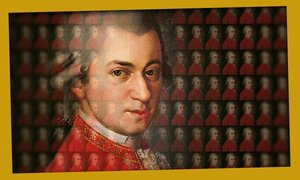Solti Hall
Mozart: Divertimento for String Trio in E-flat major, K 563
Featuring: Alexander Janiczek, Máté Szűcs, Louise Hopkins

Wolfgang Amadeus Mozart: Divertimento in E-flat major, K 563
Although in genre definition this Mozart piece is a divertimento, that is, a light and entertaining composition, still the Divertimento in E-flat major leaves the impression of a particularly complex work in the mind of the listener. It was written in 1788 for Michael Puchberg, a fellow freemason and Mozart’s generous creditor. Its first public airing took place in Dresden (1789), with Mozart on viola, Anton Teyber on violin and Antonín Kraft on cello. Posterity ranks this piece as of exceptional and unique value not only in the oeuvre of Mozart but also in the genre of the string trio. Charles Rosen wrote about it thus: “An essay in contrapuntal and harmonic richness, with a surface ease of manner that makes light of its ingenuity, this work is a distillation of Mozart’s technique and experience. The mastery of the normative technique of writing for four instruments in the seven quartets of the years 1782 to 1786, and the immense expansion of scope in the two quintets of 1787 are now concentrated within the limits of the string trio. No other composer of the eighteenth and nineteenth centuries ever understood the demands of writing for three voices as Mozart did, except for Bach in his six trio-sonatas for double manual and pedal keyboard. As a string trio, this one of Mozart’s stands alone, far above all other works in that form. It is also an interesting precursor of the last quartets of Beethoven, in its transference of divertimento form, with two dance movements and two slow movements (one a set of variations), into the realm of serious chamber music, making purely intimate what had been public, and, as Beethoven was to do in many of the short, interior movements of his late chamber works, transfiguring the ‘popular’ element without losing sight of its provenance. In Mozart's Divertimento, the synthesis of a learned display of three-part writing and a popular genre is accomplished without ambiguity or constraint.”
